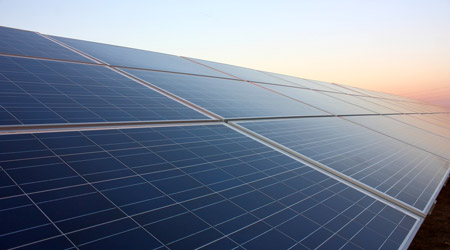
Achieving Thermal Comfort Depends on Variability
October 25, 2016
"Thermal delight" was the focus of one session at Greenbuild in Los Angeles. An example of this was the sensation you feel when you walk into a cold grocery store after walking across a hot parking lot on a muggy day. Coming from the steamy environment, the sudden blast of cold, dry air elicits an involuntary internal sigh of satisfaction. Ahhhh.
However, linger too long in the grocery store, and you will likely start to shiver as the over-conditioned space overpowers your summer outfit and sweaty skin. Finding "thermal nirvana" then, as the presenters put it, has to do with varying the thermal conditions as individuals move through the space to create a more appropriate and delightful environment.
The session, "Finding Thermal Nirvana," was presented by Gail Brager, professor and associate director at Center for the Built Environment, UC Berkeley; Claire Maxfield, director at Atelier Ten; and
Shruti Kasarekar, associate at Atelier Ten.
Their discussion covered a wide range of building design considerations. Here is some of what jumped out as of particular interest to facility managers.
To begin with, facilities are designed to accommodate the peak load condition, and they are operated to accommodate heavier clothing than may be appropriate to the season, particularly if you're a woman. As such, facilities are often over-conditioned. It is in fact not unusual for a facility to be kept at a cooler temperature in the summer than in the winter, which is the exact opposite of what it should be.
Facilities also aim for a neutral environment, following guidelines meant to satisfy the thermal comfort needs of 80 percent of occupants. As a brief aside, Brager wondered aloud with what other product it would be ok to leave 20 percent of customers "pissed off." A much better thermal model to follow, according to the panel, is ASHRAE's Adaptive Comfort model from Standard 55.
Everyone knows that space heaters are highly problematic in commercial facilities, but the presenters discussed the importance of meeting that need for individual comfort. As a possible tool, they showed a rechargeable work chair, which provides both heating and cooling, consuming 14 watts in the heating mode, and 3.6 watts in the cooling mode.
As workspace becomes more flexible, the presenters discussed the benefits of putting flex working zones in the areas which have most thermal impact in a building. If the work zone becomes uncomfortable for employees, they can simply move to a more comfortable zone. It was also suggested that companies could allow workers to move up and down in a building to find a spot suitable to their personal thermal tastes.
Presenters were careful to point out they were not recommending facilities operate at thermal extremes, but simply allow flexibility so that if someone is a bit cool or a bit warm, they could address the situation by moving to a different location, rather than attempting to make the HVAC system suit all occupants at all times.
Lastly, as temperatures rise due to climate change, it is expected this change will impact more the day-to-day experience of temperature in facilities than the peaks. This makes giving occupants the ability to be able to vary the temperature in their work zone more important in creating resilient facilities than designing to address peak load, according to the presenters.
This Quick Read was submitted by Naomi Millán, senior editor of Building Operating Management magazine, naomi.millan@tradepress.com. For more on thermal comfort, check out Achieving Thermal Comfort with Office Design at https://www.facilitiesnet.com/16201bom
Next
Read next on FacilitiesNet












